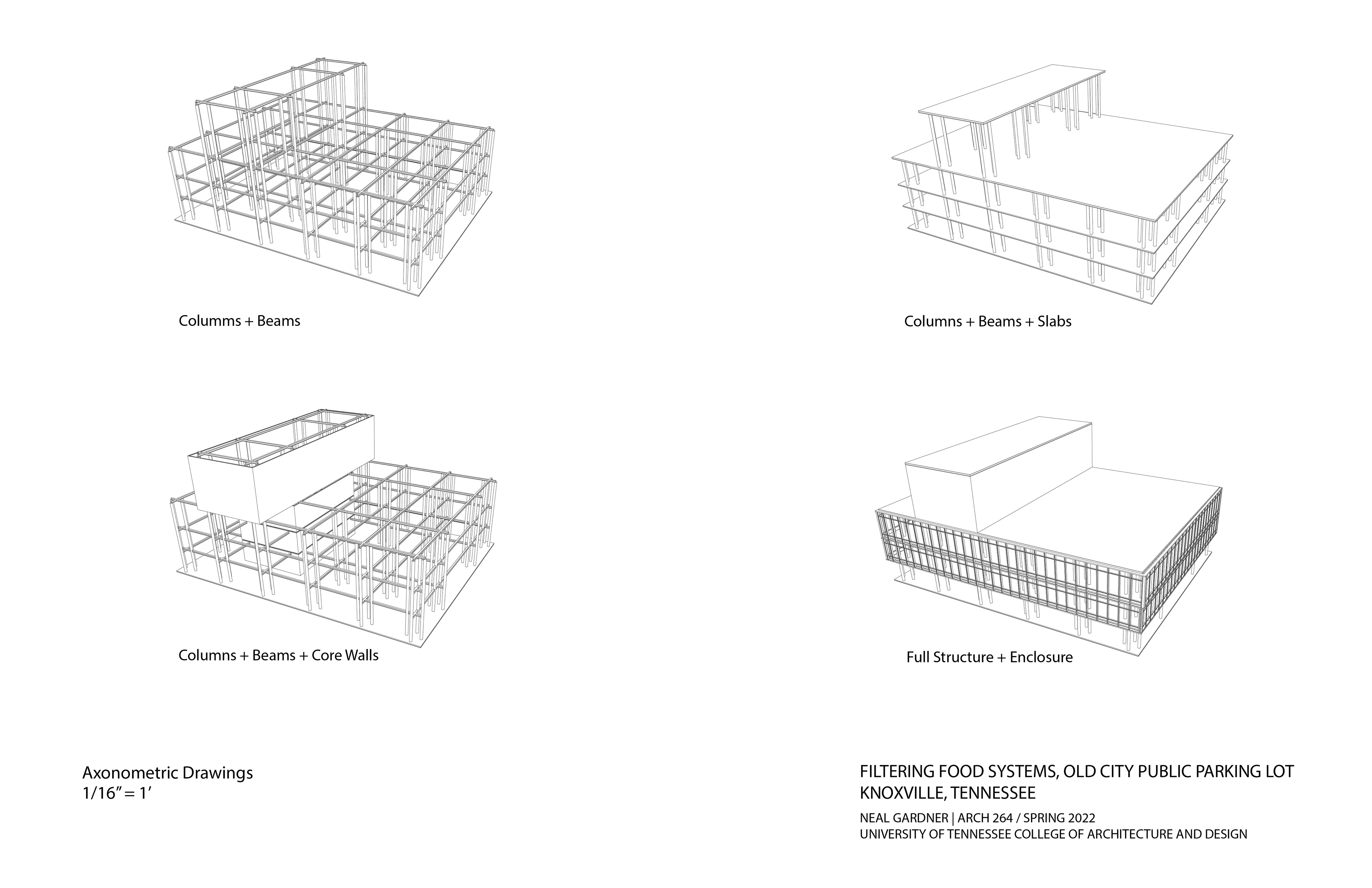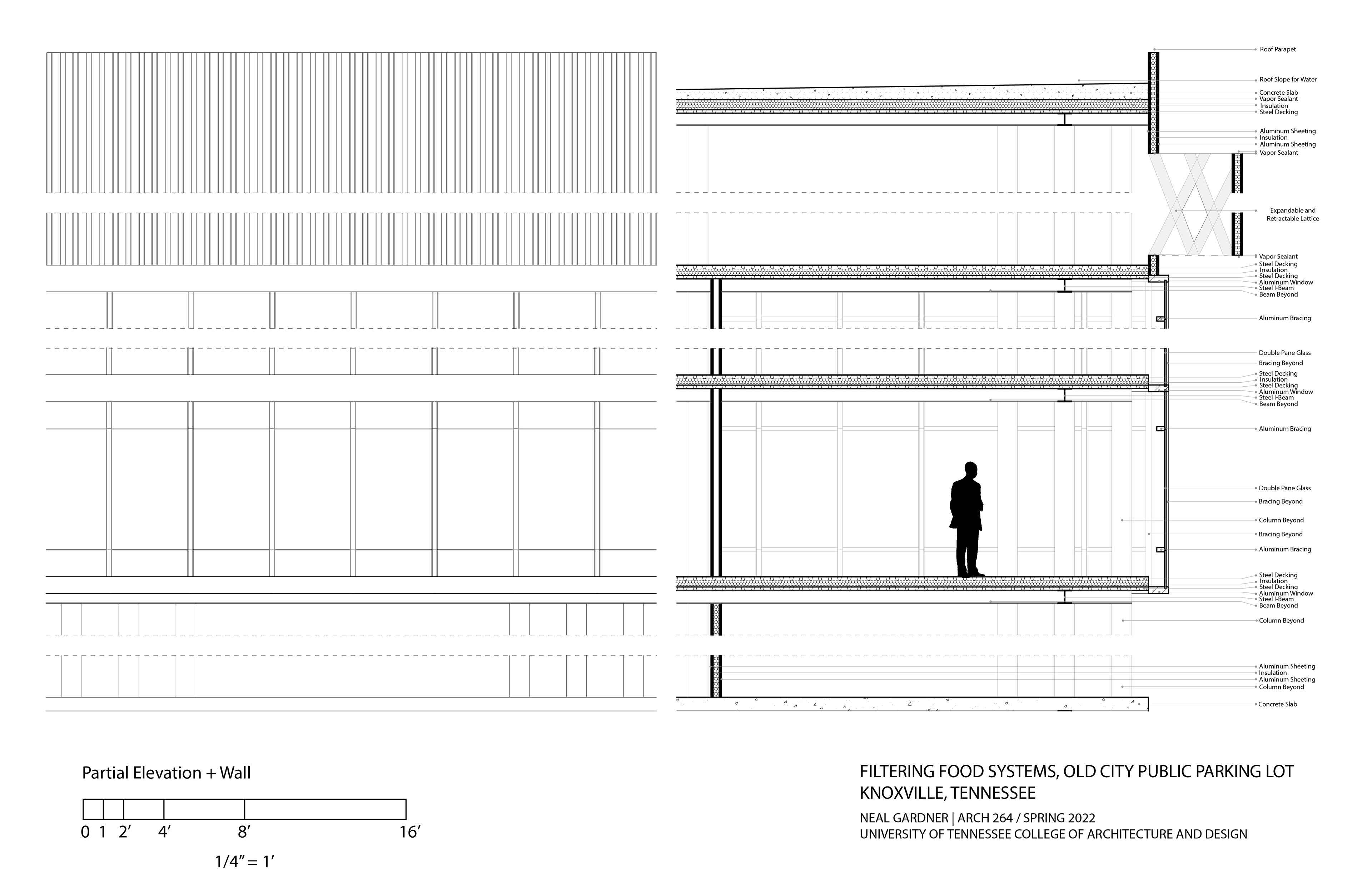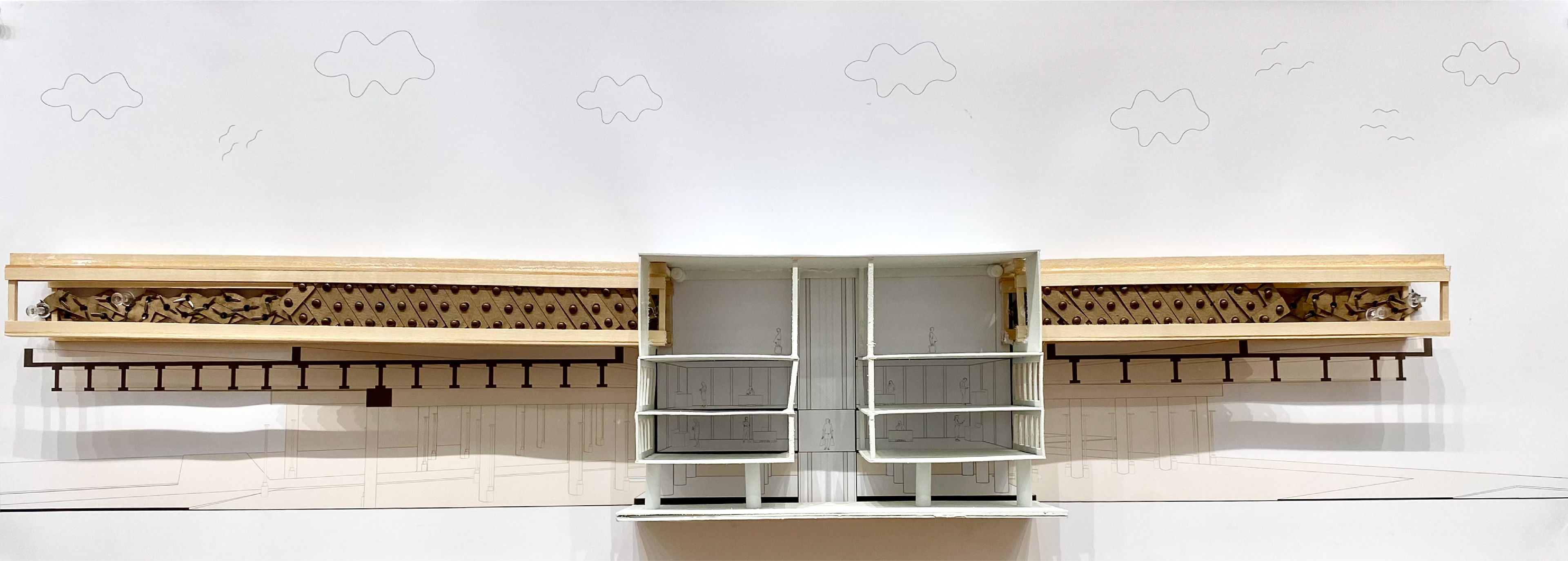In Filtering Food Systems, I have experimented with the way we percieve and recieve our food with concepts of speed and convenience at the scale of both a person and an automobile. This has been executed through new forms of fast food service and grocery shopping. This project has two sites: a parking lot underneath the interstate in Old City Knoxville (Site A) and a dollar tree located in northeast Knoxville (Site B). This studio focused heavily on human interaction and behavior.

Knoxville Context

Relative Site Existing Conditions

Arch 272 Final Deliverables

Arch 264 Capstone Project

Arch 264 Capstone Project

Arch 272 Drawing-Model Hybrid
Site A's redesign will consist of a central core builing where employees can take orders and prepare food. It will also have expandable and retractable elements that function as drive-thru booths that are located directly on the interstate. Similar to a toll booth, this system eliminates the process of exiting and re-entering the interstate to grab a meal and allows individuals to recieve food at a convenient speed and location. This also sparks production within the restaurant, as employees are pushed to make their production match the speed of the interstate. This service will function on a call-ahead system with many levels of production. When a customer is 10+ minutes away from the restaurant, they will call the restaurant and submit their order. Employees inside the restaurant will recieve the call, assign the customer a lane number to arrive in, and pass the order along to the kitchen. When the meal is prepared, it will be sent up the elevator to the top floor of the restaurant with another employee and placed on a conveyorbelt that will send the food out to the employees working the drive-thru booths. Those employees will retrieve orders assigned to their lane off of the conveyorbelt and complete cashless transactions with customers to keep the service moving. This new system is operated with hopes of providing a consistent and convenient option for locals and travellers to grab a meal in the midst of the fast moving environment around them.
Site B's redesign will feature a new way for consumers to interact with the food they shop for in a grocery or market. Contrary to Site A, Site B encourages consumers to have a slower and more interactive process with their food. The existing Dollar Tree will be re-organized into four main sections that correspond with consumer interactions with produce. This experience encourages users to learn about the process of moving produce from farms to shelves. Customers will start at the back of the store where produce is delivered off of trucks and sorted into bins. They will first select their items. They will move up to the second station to "prune" their items. After this, they will move up to the third station to wash their products. Finally, they will dry their food and divide it into carrying bags to leave the store at the fourth station.
These two contrasting experiences serve different target audiences and needs. They filter users through convenient or inconvenient cycles and encourage them to consider the relationship between the speed and quality of their food.